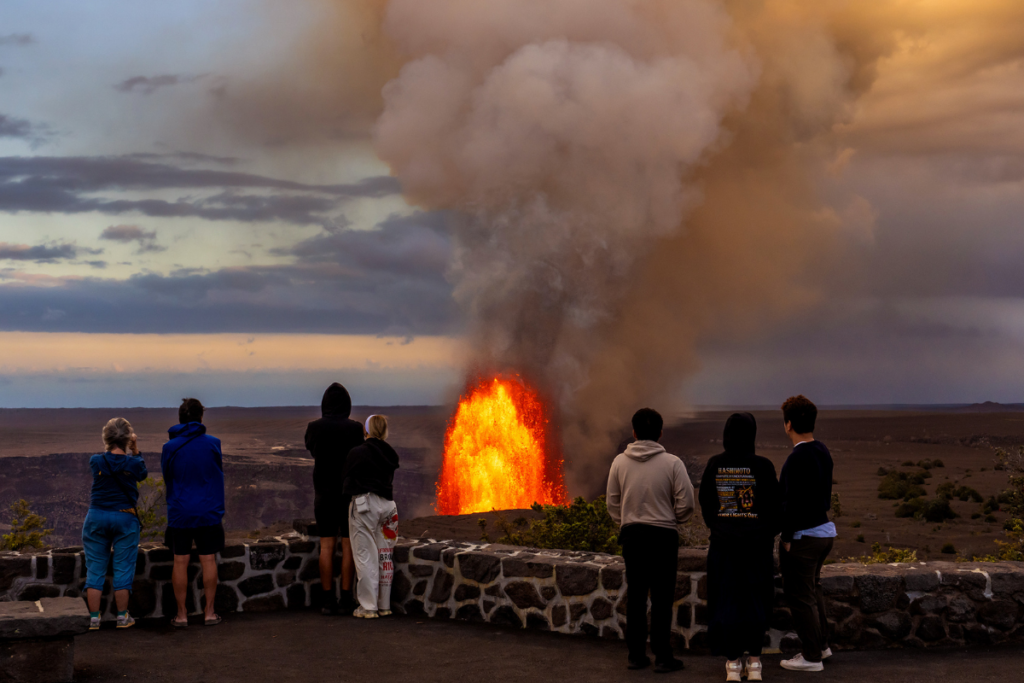Here’s Why You Shouldn’t Take Lava Rocks from Hawaiʻi
The national parks don’t want you to mail them back, either.

Ever heard of the phrase, “Leave No Trace”?
It’s an accepted set of seven principles—a mantra in national parks and other protected outdoor spaces—that remind visitors to minimize their impact on the environment.
One of those principles can directly be applied to national parks in Hawai‘i: Leave what you find.
For decades, people have taken lava rocks from Hawai‘i Volcanoes National Park and Haleakalā National Park as souvenirs. And for just as many decades, they’ve been sending them back, often with handwritten notes of apology. Apparently, all of these people eventually caught wind of the myth that says anyone who takes rocks from Hawai‘i will be cursed.
So we’re here to break it down for you.
Simply put, it’s illegal—and culturally inappropriate—to take anything from a national park, including lava rocks.
According to folks at Hawai‘i Volcanoes National Park on Hawai‘i Island, taking rocks alters the geologic story for future generations and can negatively impact native biodiversity.
In addition, Hawaiian archaeological sites comprise significant remnants of the rich Native Hawaiian history of Hawai‘i and are threatened by human impacts, explains Nick Clemons, acting chief of interpretation, education and volunteers at Haleakalā National Park on Maui.

Taking rocks from national parks alters the geologic story for future generations and can negatively impact native biodiversity.
Photo: Getty Images/Su Nitram
“When visitors to Haleakalā National Park take rocks from the park, they risk harm to these important and threatened sites, many of which are difficult to discern as archaeological sites to the untrained eye,” he says. “Taking rocks from the park is also disrespectful to the Native Hawaiian culture, which considers the summit of Haleakalā to be a sacred place.”
He adds that, through the mail, the park receives an average of 3,500 rocks, pieces of coral and other natural items annually. And, inevitably, “the myth” is the reason. According to that myth, taking these items from Hawai‘i will result in bad luck thanks to a curse by the volcano deity Pele who, according to mo‘olelo (story), lives in Halema‘uma‘u Crater.
Here’s the thing: That bad-luck curse isn’t rooted in any mo‘olelo and, according to Hawai‘i Volcanoes National Park, is actually considered offensive to many Native Hawaiians.
Either way, the national parks don’t want people to mail back the pōhaku (rocks).
“Ecologically, items mailed back to the park can carry invasive species like insects, seeds, algae, or bacteria not visible to the naked eye,” Clemons says. “These invasive species can pose a threat to native species. In addition, it takes a substantial amount of park staff time to sort the packages and sanitize the rocks to prevent the potential spread of invasive species. Once rock, sand or coral is taken from its natural habitat, it can never be returned to its original location because we do not know where it came from.”
So what are you supposed to do if you want to return these rocks?
Don’t, Clemons says. Instead, contact your local natural resources department for advice.
And blame your bad luck on something else.
This story was originally published in our Fall 2024 issue, which you can buy here. Better yet, subscribe and get HAWAIʻI Magazine delivered to right to your mailbox.


